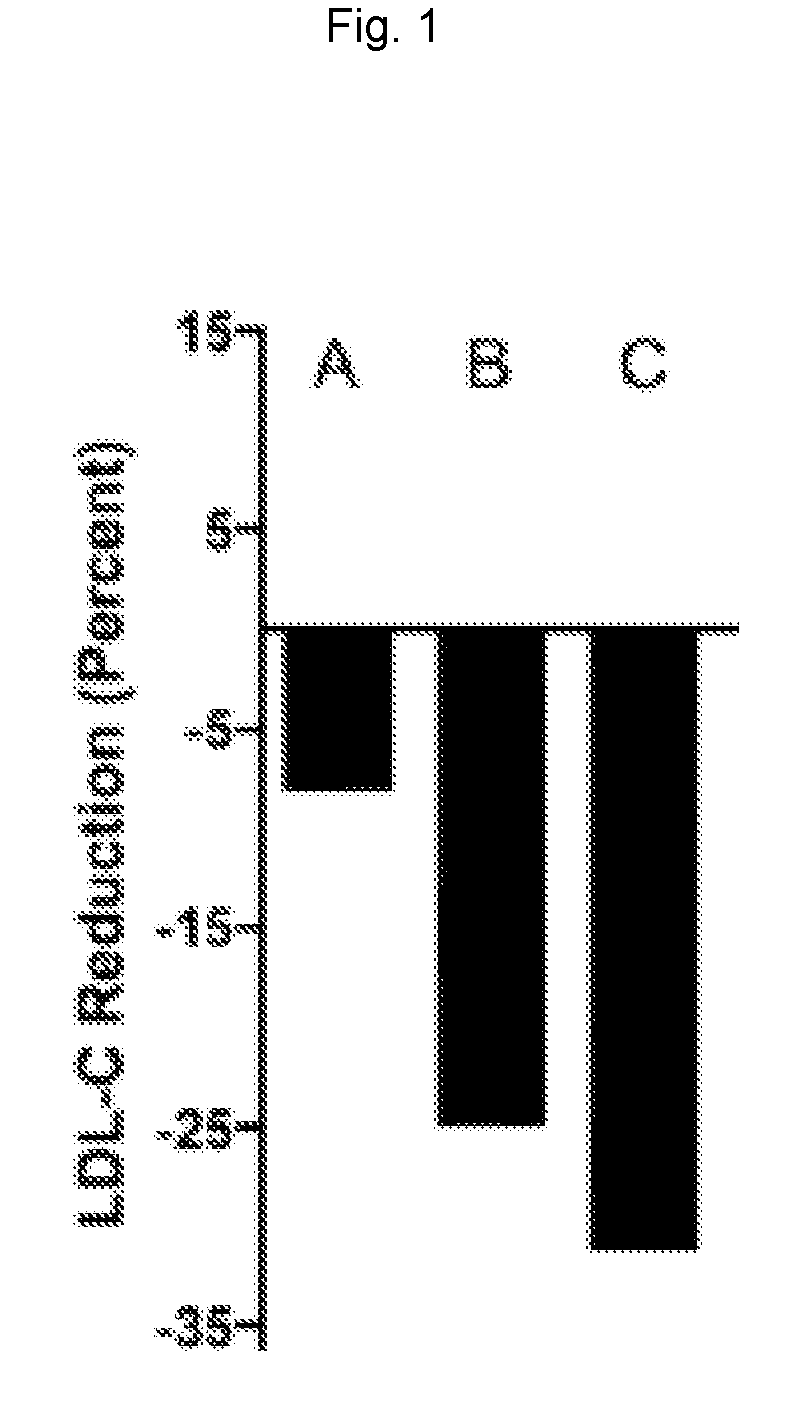Methods of Reducing Risk of Cardiovascular Disease
a cardiovascular disease and risk reduction technology, applied in the field of cardiovascular disease risk reduction, can solve the problems of not all patients can tolerate statins or high statin doses, achieve the updated ncep atp-iii guidelines recommendation to reduce ldl-c levels to less than 70 mg/dl for persons at very high risk, and achieve the effect of reducing plasma ldl-c levels and reducing risk
- Summary
- Abstract
- Description
- Claims
- Application Information
AI Technical Summary
Benefits of technology
Problems solved by technology
Method used
Image
Examples
example 1
Gemcabene Further Lowers LDL-C in Patients not Reaching Goal on Statin Therapy
[0124]An 8-week, double-blind, placebo-controlled, randomized, multicenter, phase 2 study in hypercholesterolemic patients on a stable dose of statin (on statin therapy for at least the previous 3 months) was conducted to evaluate the efficacy of gemcabene in the further reduction of LDL-C in these patients.
[0125]A total of 66 hypercholesterolemic patients were treated in this study: 22 randomized to gemcabene 900 mg, 20 randomized to gemcabene 300 mg, and 24 randomized to placebo.
[0126]Patients included in the study were men and women ≥18 and ≤65 years of age with hypercholesterolemia and an LDL-C level at screening of ≥130 mg / dL while on a stable (3-months) dose of a statin. Patients were required to maintain their current dose of statin throughout the course of the study.
[0127]Patients were excluded for any of the following reasons: women with childbearing potential; ages >65 and 400 mg / dL; creatinine p...
PUM
 Login to View More
Login to View More Abstract
Description
Claims
Application Information
 Login to View More
Login to View More - R&D
- Intellectual Property
- Life Sciences
- Materials
- Tech Scout
- Unparalleled Data Quality
- Higher Quality Content
- 60% Fewer Hallucinations
Browse by: Latest US Patents, China's latest patents, Technical Efficacy Thesaurus, Application Domain, Technology Topic, Popular Technical Reports.
© 2025 PatSnap. All rights reserved.Legal|Privacy policy|Modern Slavery Act Transparency Statement|Sitemap|About US| Contact US: help@patsnap.com



